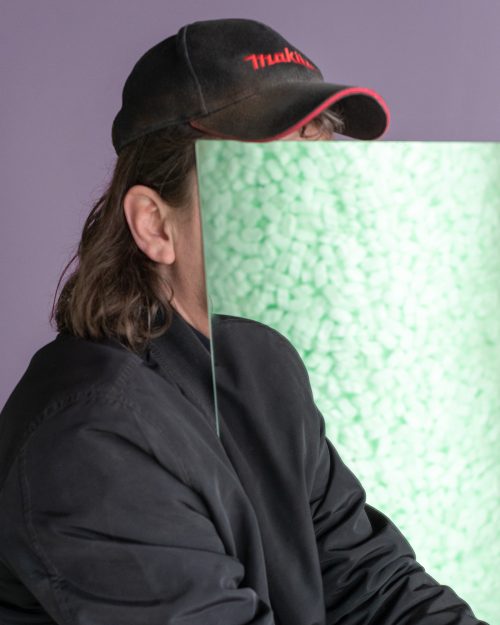
Veronika Čechmánková, Pavla Dundálková, Eva Rotreklová, Edita Malina
Poem of Powerful Struggle

Advertisement



















In the contemporary society, which continues to redefine norms and expectations associated with gender identity, four artists in their joint exhibition — Veronika Čechmánková, Pavla Dundálková, Edita Malina and Eva Rotreklová — interrogate the dynamics of women’s lived experience and roles ascribed to them. The exhibition reflects the tension between an individual experience and societal expectations, between authenticity and pressure to conform. Through diverse approaches and media, they analyse the relationship between a body, care, control, and identity while exploring both voluntary and imposed roles within gender and power structures.
The key motif here is a body as a space of symbolic control, onto which the idea of normative femininity is projected. Such an aspect is reflected in the work of Edita Malina, who works with the motif of a garden — a space reserved for a woman where she can move freely while, however, under the pretext of protection, remaining under surveillance and control following the patriarchal distribution of power. In the exhibition, decorative fence spikes driven into the walls as a masculine gesture — this time planted by a woman — concretise the imaginary garden. Combined with the visible rust, they refer to the obsolescence of such thinking and the need for social change. The layout of the spikes is not arbitrary; it is based on a historical dance in which the woman’s step was always determined by the man’s step. Her role was to embody beauty, grace and sophistication — but what happens when the man’s step disappears, and the leadership is handed over to the woman?
The mounted cocoon may also have a double meaning. On the one hand, it can refer to a transitional phase between two states, and on the other, it can serve as a protective membrane of a fragile organism guarded from external threats.
Personal, relational or social care is another crucial theme explored by the exhibition. In her distinctive drawings inspired by the aesthetics of animated series from the turn of the millennium, Eva Rotreklová engages with the issue of care as a value respected by society but often instrumentalised and taken for granted. She analyses the care mechanisms within relationships with her unique style, full of exaggeration, humour, and irony. She examines how this skill is transmitted within family structures and whether real care is possible in an environment where selflessness is conditioned by the existence of capitalist models. Here, the artist views care not only as an expression of relation but also as a strategy of self-representation and a means to create a social hierarchy. Care ranges from intimate family ties to choosing the perfect face cream — seemingly small decisions thus reflect broader social mechanisms of power and status. As a culturally conditioned mechanism, care is inseparable from gender roles, which is manifested in different social and personal situations.
Experiences of motherhood and raising children, as reflected by Pavla Dundálková in the work of the breastfeeding woman Růžena, reveal the transformation of bodily perception and the loss of shame in instances where care becomes an urgent need. Breastfeeding as a biological necessity breaks down the boundaries between private and public space, while the mother’s body finds itself in a paradoxical situation — it is both a source of nourishment and an object of social control. In her work, Dundálková reflects on the importance of one’s own choice, which she materialises in the statue of the unshaved woman Sabina, symbolising naturalness and defiance of aesthetic norms. This motif introduces a range of thinking about a body whose form and perception are constantly subjected to the pressure of social expectations.
Veronika Čechmánková, on the other hand, focuses on care as an act of self-expression and visual self-determination. Her project explores the phenomenon of manicure and nail care as a cultural symbol associated with gender stereotypes and social expectations. Using personal experiences, she points to the ambivalence of this aesthetic element, which can be perceived as a sign of vanity or privilege and a tool for self-expression and strengthening one’s identity. The chosen look of the installation, comprising artist-made tables with large-format photographs showing the artist’s nail designs, evokes the atmosphere of nail salons and emphasises the contrast between nail care as an act of work and an act of representation.
The exhibition Poem of Powerful Struggle opens the question of emancipating gender identity from structural constraints and points to its possible future position outside binary frameworks. Here, the body is not merely an object but an active space for negotiating power, autonomy, and normativity. Through personal experiences, historical references, and contemporary visual culture, the artists reflect on the dynamics of women’s identity in an environment that continues to redefine what it means to be a woman.
Anežka Januschka Kořínková




